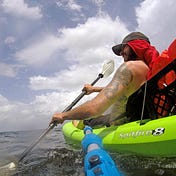Jake Katel

Jake Katel
Jacob Katel is a Writer, Photographer, and Movie Maker raised in Miami since 1988 https://www.amazon.com/Jacob-Katel/e/B00C7VH40Y

Jacob Katel is a Writer, Photographer, and Movie Maker raised in Miami since 1988 https://www.amazon.com/Jacob-Katel/e/B00C7VH40Y